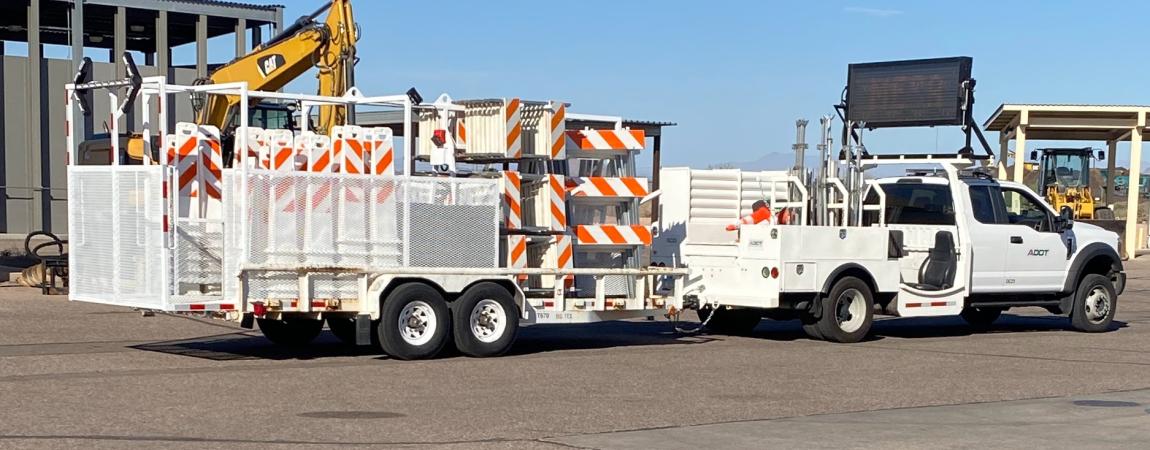AZ Innovation Spotlight: Portable and Removable Traffic Control Trailer

Originally published in the June 2022 issue of ADOT's Inside Lane, written by Ashley Richards (Senior Communications Specialist)
When ADOT crews need to close down roads or highways for emergency situations, the process can be slow and costly.
ADOT often works with traffic control contractors, but it takes time for that contracted crew to show up, set up and take down barricades. ADOT also has to pay for the use of barricades, and for long-term closures — that can get pretty expensive. “It can be a frustrating process. It chews up a lot of our time waiting on the contractors,” said Mesa Maintenance Highway Operations Supervisor Jerry Turner.
“The sooner we can get barricades picked up, the sooner traffic can flow freely, which can reduce secondary accidents and allow commerce, citizens and visitors to get to where they're headed as soon as possible,” he added.
To save time and money, Turner developed a way to improve the entire process. He and his crew built a portable and removable traffic control module, allowing them to haul and deploy their own barricades for closures. The module holds more than 150 barricades and can be easily transferred to a trailer without unloading them. It also includes an arrow board and lights that are powered by a single, rechargeable battery. The traffic control module allows crews to cut out the middleman for a variety of closures.
For emergency calls and long-term closures, ADOT crews can take care of it instead of having the barricade company do it.
“On State Route 87, we do a holiday corridor every Memorial Day. We close down Bush Highway because the traffic going to Saguaro Lake gets overwhelmed, causing backups on SR 87. Now, we are able to take the traffic control trailer out to any location, stage it, and when we get the word that we need to shut down the highway, we’ll be able to close it right there on the spot,” Turner said.
“With the traffic control trailer, we are able to reduce response time. If there’s a natural disaster, a fire, flooding, a major traffic incident, anything that’s spur of the moment and will result in a longer closure, we’ll be able to handle it in a timely manner,” he added. The new module has already been successfully used for a right-lane closure so crews could repair a guardrail, and Turner expects it will get more use soon. He credits his crew — Brandon Bedoe, Robert Bimberg, Chris Weatherly, Mark Amaya, Steve Collins and Cody Sangster — for helping make his vision for the module a reality.